Hello, fellow creatives. Happy St. Patrick’s Day.
Let’s just get into it as there’s a lot to cover this issue…
It used to be the envy of others to be a freelance illustrator or gag cartoonist. Being your own boss (in concept), making your own hours, and being one of the lucky few able to work at home in your pajamas. Who else can work at home (aside from everyone now)?
Now, too frequently, a freelance job is actually an open call. I saw this happened to friends twice recently where a job was an open contest. The client didn’t make this clear that multiple creators were being considered for the same job. One assignment involved a book cover. Two illustrators completed the job, without showing sketches, and the publisher paid the one he liked the best, and ghosted the other.
It’s sad when the field is taken so lightly. Seems like many are not so much freelancing as much as writing features or creating cartoons, as a hobby. One confessed they didn’t know what they were doing. I thought to myself, I agree.
This has a trickle effect in the business. It devalues the brand of the field and is one of the reasons it’s an occupation where the rates are going down. Why should they go up? There people willing and happy to be published for free. In some instances, creators are giving away work for free online. It used to be said, the best work will rise to the top. That’s no longer true, I’m afraid. I wonder if the same thing is happening in other fields. If I was to hear an inferior performance at Lincoln Center, would I really hear the difference? Perhaps the same is happening here, too.
This was a real screen grab off the TV. Don’t upset your mom like this. Branch out. Wear different hats. Teach, speak, design, draw at baby showers. Protect yourself by asking for half up front, and get things in writing. Good luck and keep your sense of humor.
Congratulations to Abby Siegel who won the first prize of $500 with the winning caption, “You expect us to believe you have an exact twin?”
The CartoonStock jury taped their conversation on the decision on YouTube. 8-timer New Yorker Caption Contest champion, Larry Wood, was not only a juror but wrote this commentary on the contest.
The following is Part II to a feature in The Bob two issues ago (Writing Funnier) and an article I had published in Writer's Digest, with Mark A. Shatz. Mark is an award-winning professor of psychology at Ohio University-Zanesville and has extensive experience as a teacher, speaker, and seminar leader on various topics such as pedagogy, death education, and stress management.
Together we are doing a more in-depth webinar on this subject at the upcoming Erma Bombeck Workshop on Friday April 5th. Join us here.
Exaggeration: Be the Funniest Humorist in History
Exaggeration is the Silly Putty of humor writing. You start with a realistic scenario, then bend and distort it for humorous effect. Exaggeration is one of the most straightforward and effective comedic tools, and it appears in all types of humor: Cartoonists magnify physical features, impressionists exaggerate speech mannerisms, and writers embellish language.
As a humor writer, don’t shy away from every chance to stretch the truth, whether by understatement or overstatement. In most circumstances, unmitigated exaggeration is viewed as lying. In humor, clever embellishment is rewarded with laughter.
You can inject hyperbole into your characters, reactions, and situations to amplify the humor. For instance, you might write, “Julie is so indecisive that when she goes sailing, her boat goes in circles.” The description instantly paints a clear and humorous picture in your reader’s mind.
Effective humor is truth based, so it’s critical to strike a balance between realism and exaggeration. The following Jeff Altman gag works because it evokes a relatable, albeit somewhat plausible, image.
My dad’s pants kept creeping up on him. By 65, he was just a pair of pants and a head.
If there’s anything instinctual about humor writing, it’s avoiding too much distortion—simply being ludicrous or audacious won’t work. The relationship between exaggeration and realism in humor is like stretching a rubber band. A little stretching, even repeated stretching, is no problem. However, overstretching the band will cause it to break, as well as the humor and the reader’s trust.
Obscenities and graphic language are also forms of exaggeration. As humorists, we recognize the comedic power of “stepping over the line.” Yet, there’s a time and place for shock humor, and that’s not a @#$&ing exaggeration.
Contrast: Juxtaposing for Fun
Contrasting is the juxtaposition of elements not customarily coupled, a technique that cartoonists use to create humorous mismatches by placing significantly different elements side by side. Cartooning contrasts range from simple ones, such as someone wearing a tuxedo to a picnic, to elaborate juxtaposing, like the cartoon from the last issue, Moses leaving the mountain top with the 10 Commandments on a ski lift.
Juxtaposition begins with humor’s two most important words: What if? Let’s say you need humor for a piece about a protagonist going to traffic court. You begin by exploring possibilities without worrying about pushing the envelope. What if the character was a pet watcher and needed to bring three dogs to court? What if it was pigs? Keep asking yourself, “What if?” to create as many contrasts to characters and situations as possible.
Cartoonists have greater latitude in using absurd contrasts, like a judge yelling “Order, order!” because of three squealing pigs. Yet, as writers, we can still use juxtaposition to brainstorm new humor angles and create funny mismatches.
Contrasting also works with emotional tone. For instance, you might use a dramatic scene to set up a gag and then quickly switch to a lighthearted tone for the punchline. Richard Pryor often started a comedic piece with a tragic event, like a heart attack or self-immolation, then switched gears to an absurdist tone to make the humor potent and memorable.
Incongruity, satire, and irony are just contrasting mismatches between expectations and what happens. You create surprising, humorous twists by comparing or contrasting different ideas, things, or situations.
Aggressive Editing: The Samurai Humorist
Crafting humor requires extensive rewriting. Lots. As Carolyn Janice Cherry astutely noted, “It is perfectly OK to write garbage—as long as you edit brilliantly.”
When you’re writing humor, your first draft can be as long as you like. There is no censorship during brainstorming, just a playful, uninhibited creation of ideas.
But in the second draft, eliminate every nonessential phrase and cut out every superfluous word by the final draft. Just as no machine has needless parts, no good humor piece should have unnecessary elements. Your mantra should be: “Make every word work.”
During editing, also make sure not to reveal keywords in the setup and always save the funniest idea or word for the end. Precision, brevity, and holding the surprise will make your humor more enjoyable.
Aggressive editing is time-consuming and, at times, frustrating—you will discard most of the items you begin with. But your material will be considerably funnier if you embrace being a samurai editor and ruthlessly cut material that doesn’t resonate with the readers, advance the story, or stay true to character voices.
Conclusion
Humor is at its funniest when it’s visual, and writers can craft more humorous material by employing the same techniques used by cartoonists, such as vivid descriptions, symbolic language, and imagery. By thinking and writing visually, you can show the funny to readers.
That said, let me share an example using some of that thinking in the current issue of the very cool Funny Times, where I did an advice column (and this cover —thanks so much for that, FT).
Mr. Fix-It BC
Dear Gort, Last May we moved from a cramped mud hut to the cave. There’s more floor space and we finally got that open kitchen layout we always wanted but we are freezing and not sure we will all make it through the winter. Help! Gooh, Upper Cliff
I will assume you have already double-downed on the animal hides; have you tried fire? Very popular and it can be used not only for warmth but for cooking food or warding off deadly predators. If you decide you don’t like it, just put it out using water, sand or by trampling on it. Good luck and check back with me.
Dear Gort, How do you remove stubborn cave drawings on cave walls? I’ve tried clubbing the walls endlessly but nothing works. Yarg
You need to make an Acheulean handaxe. This should take no more than a year or two to complete. Once done, chisel away the defaced walls until the markings are removed…and stop letting your kids draw on the walls.
Dear Gort, We are installing a casual sitting area out of dried mud and having difficulty creating one that’s comfortable. Yours, Thur
Many contemporary chair designers seem more interested in innovation than in good seating. You wouldn’t dream of wearing a bison head that didn’t fit you, would you? But you can go into most homes and not find a single chair that’s properly designed for your hunched back.
Start by forming a huge mound of wet, pliable mud. Plop into it and with the help of others, pull yourself out. While wet, press animal fur into the contours for back support. Stick mammal bones on the sides for armrests. If that does not result in a comfortable seat, make someone else sit there and try again.
Dear Gort, My family and I have evolved and would like to answer nature’s call with a little more privacy and without the interruption of dangerous animals. Any suggestions? Moog
Have you heard of this new device called a shovel? Dig the deepest hole you have ever seen. With everyone’s help it shouldn’t take more than a year or two to complete. You can make this a fun family project, just be careful you don’t lose anyone down there. Lay tree trunks across your hole in a way that you have left a new smaller hole in the middle. Construct over it a tent made of pliable sticks. Congratulations, you just built your first neander-stall.
Dear Gort, My ceiling is dripping, forming large stalactites. Any dance ritual is done at my neighbors. How do I stop these leaks? Gug
Gug, stalactites take millions of years to form so I wouldn’t worry about the leaks. As far removing them, there’s a reason why people say most accidents happen in the home. Better to ignore them then to hurt yourself. Trust me, one day they’ll be a selling point.
Dear Gort, We live inside a woolly mammoth carcass. How does one deal with the awful smell? Drok
Drok, this can be expected living inside a decaying mammal but are you sure the smell is not you? It may be just time to upgrade to a cave or would that be too weird for you?
Dear Gort, We have gargantuan rodents. We tried thorny barricades at the entrance but they are no match for the prehistoric hares. With the holidays approaching we were hoping to entertain. Sleepless in Ciyla
There’s nothing that can be done. You could encourage your guests to BYOS, bring your own spear.
Dear Gort, I have a stick going through my head. Thanks in advance, Thag
This is a two person job; someone to pull the stick out of your head and yourself. Forage and chew on some cinchona leaves until you feel light-headed to ease the pain. You’ll know you’ve taken the right amount when you see the world spinning. Then bite down on your wrist to create a distraction while your buddy stands on your face to pull out the stick. In a year or two you will be as good as mud.
-END-
I usually get nice remarks but the last issue The Best New Yorker Cartoons Voted By ME, got a tremendous amount of feedback (I was honestly expecting some blowback from my choices and for tooting my own horn). I decided this one time I really want to share and thank people for the love and support:
“Fabulous issue! As irresistibly likable as you are.”
— Michael Larsen author coach and author of How to Write a Book Proposal, How to Get a Literary Agent and Guerrilla Marketing for Authors. All are bestsellers in multiple editions which have helped me. Thank you, Michael.
An anonymous subscriber:
“This is a great issue! I love the portrait of the artist as a young cartoonist. The storage locker cartoon is one of my favorites. I miss the days of the non-PC humor. Reckless, transgressive, and hilarious, just like the murderous Santa.”
From my high school art teacher, Susan Carter:
“I really enjoyed this issue. Lots of insight as well as good cartoons! Also some stuff brought me back to your earlier struggles & good times, esp. with the New Yorker. Love your stuff, your humor and your marvelous brain!”
The Erma Bombeck Workshop is sold out but I will be doing the Erma Home Schooling on Friday, April 5th as part of their big 2024 Erma Bombeck Writers' Workshop in Dayton, Ohio, April 4th, 5th and 6th. It will include virtual workshops on the craft, marketing and publishing of humor by Eva Lesko Natiello, Jane Friedman, Mark Shatz, Susan Hall Pohlman and myself. My class is Humor Your Readers Can Visualize: How to Make Writing Funnier. For details click HERE. To register click HERE.
EBW is using my here drawing as the “official print” of the conference…
“A beautifully written and painted love letter to the museums of North America.”
— Max Hollein, director & CEO, the Metropolitan Museum of Art, NY
If you buy a copy of my book, as a Thank You I will give to you a 1-year subscription to the PAID version of this newsletter. Just email me using the button below that you bought the book — honor system.
And with that, this ends another issue of The Bob. I appreciate anyone sharing the newsletter and helping me get the word out. Next issue is a paid edition about producing nonfiction books and motivation.




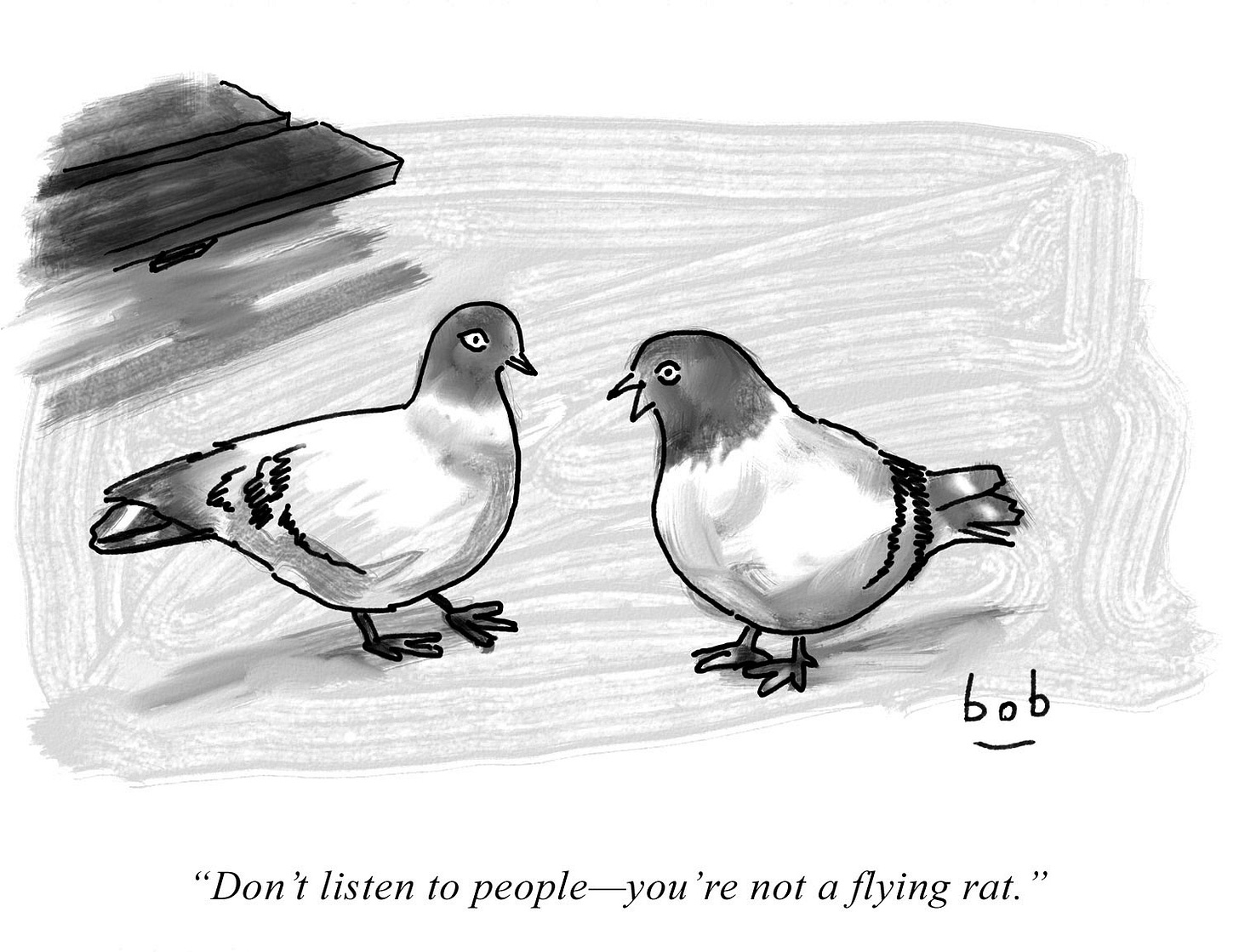



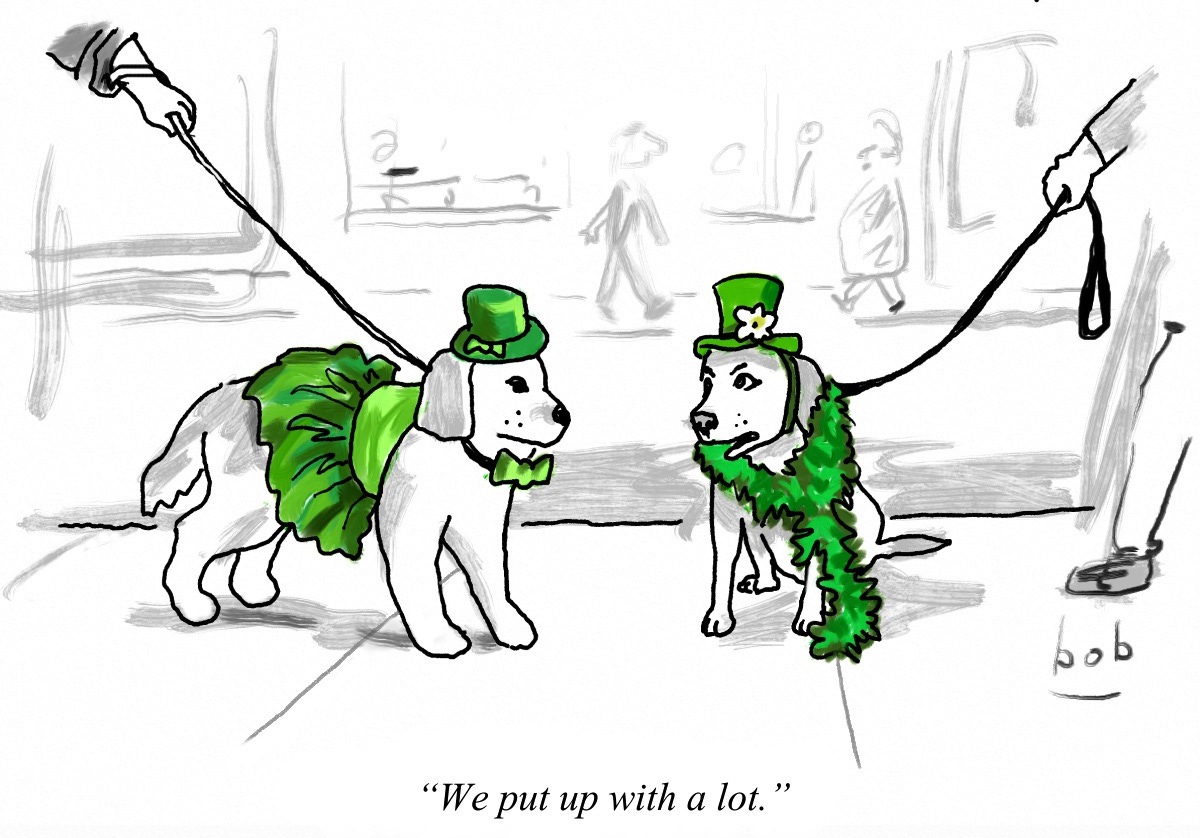




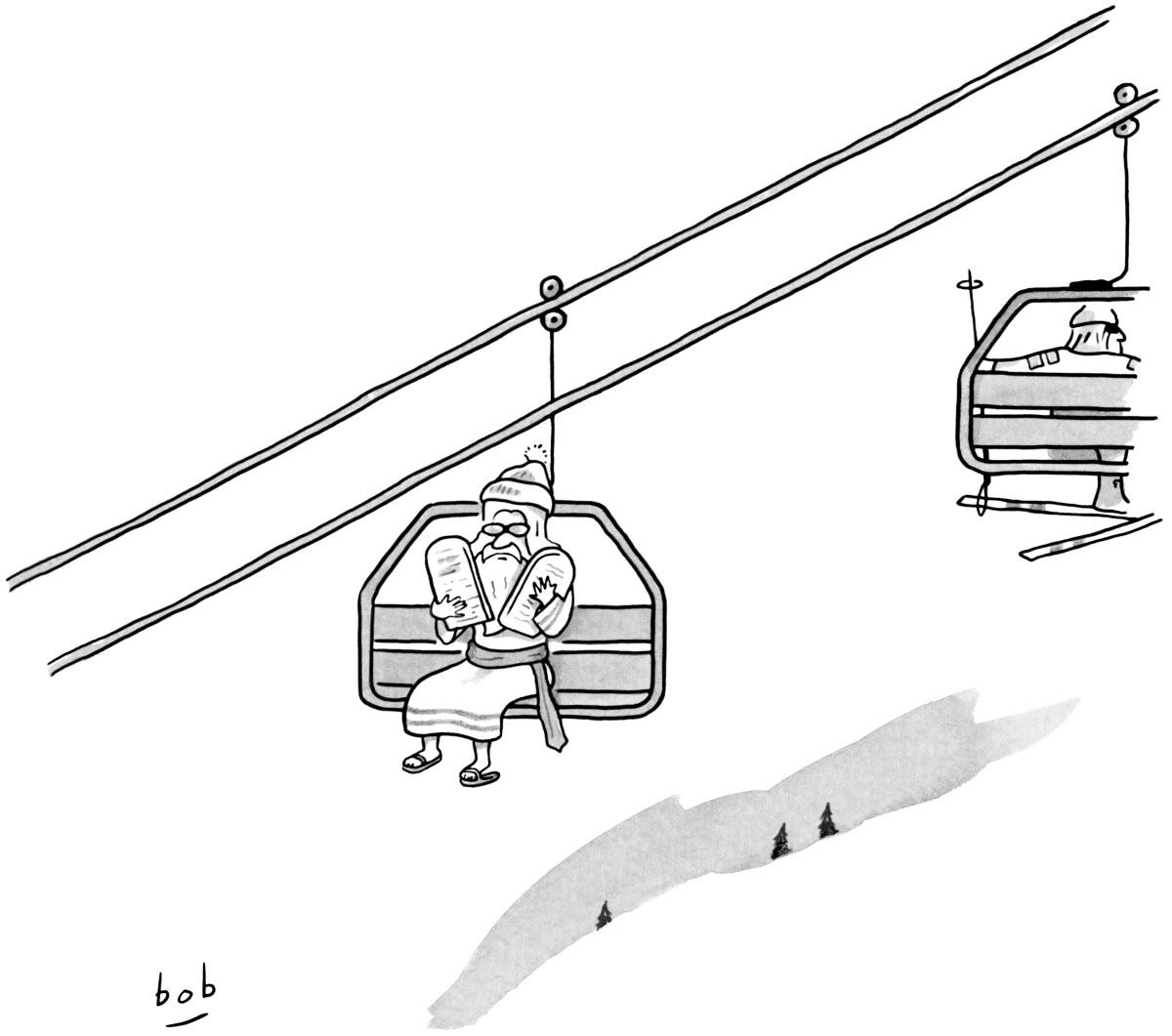



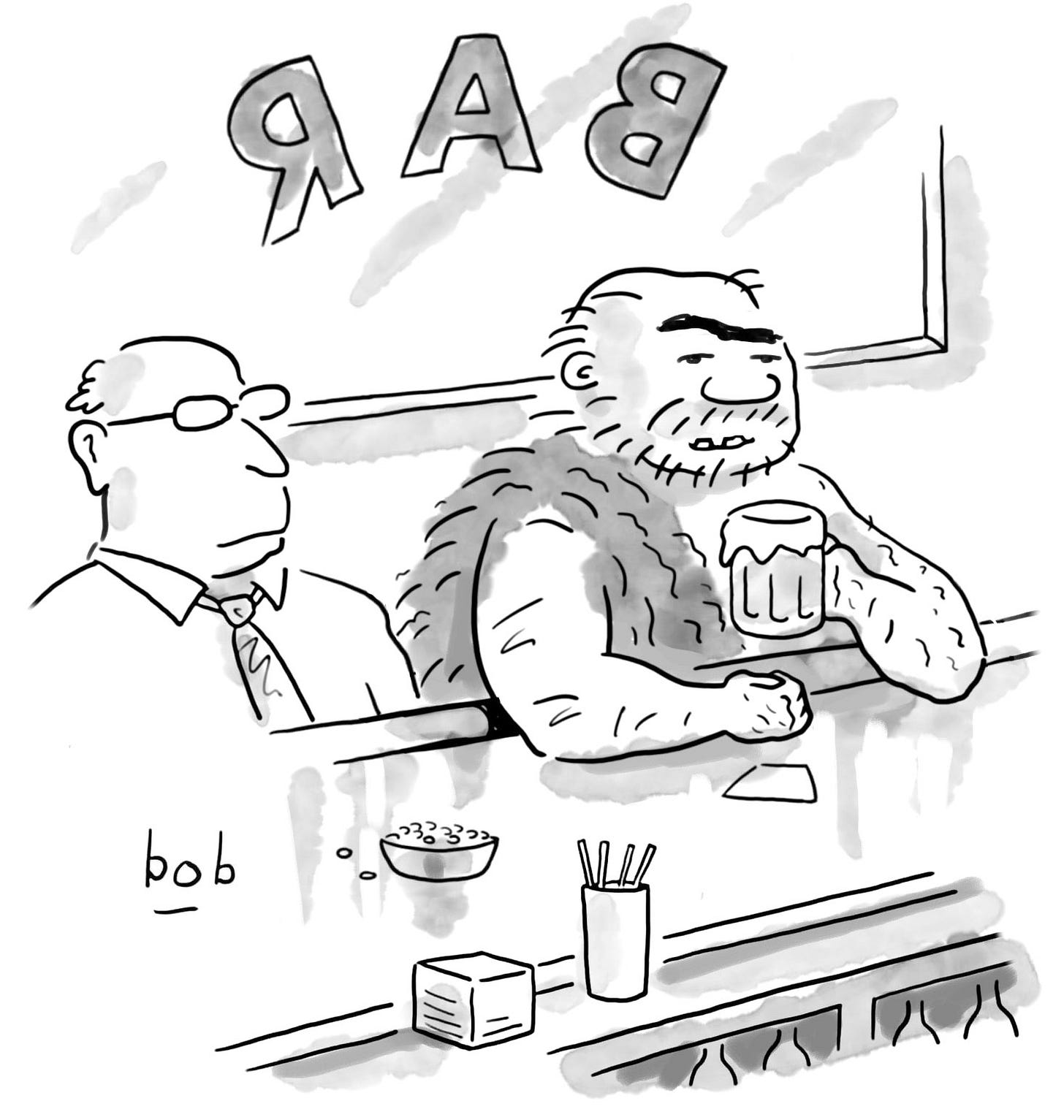
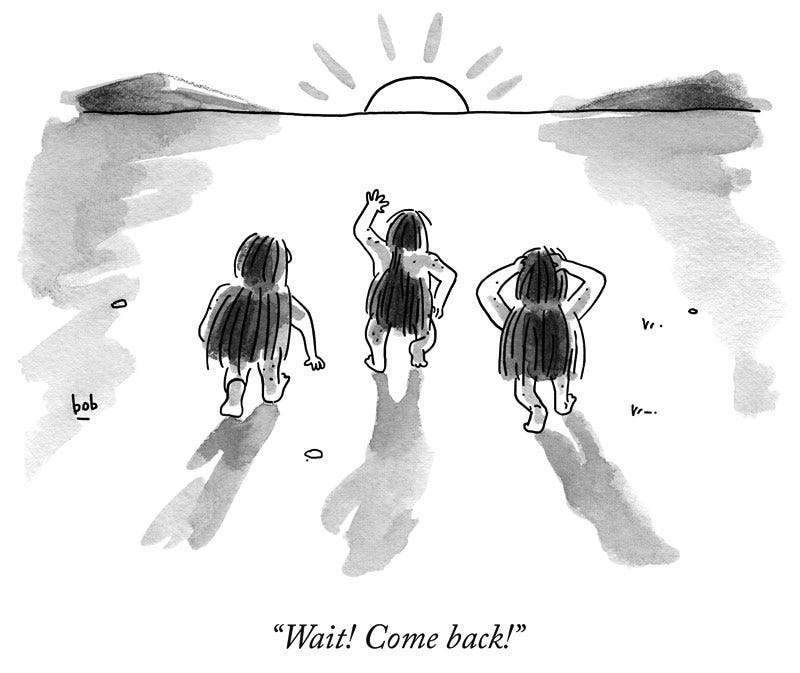


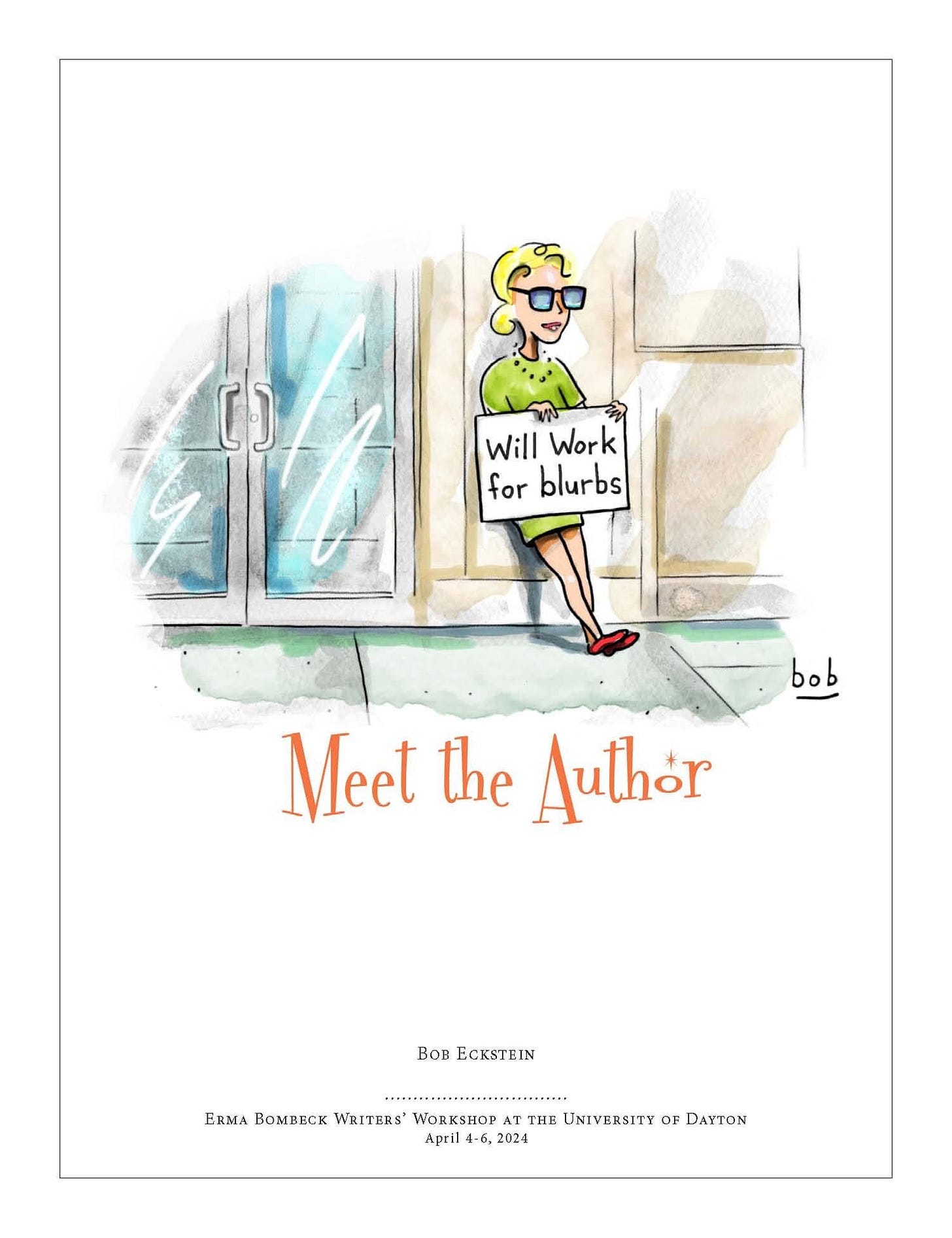


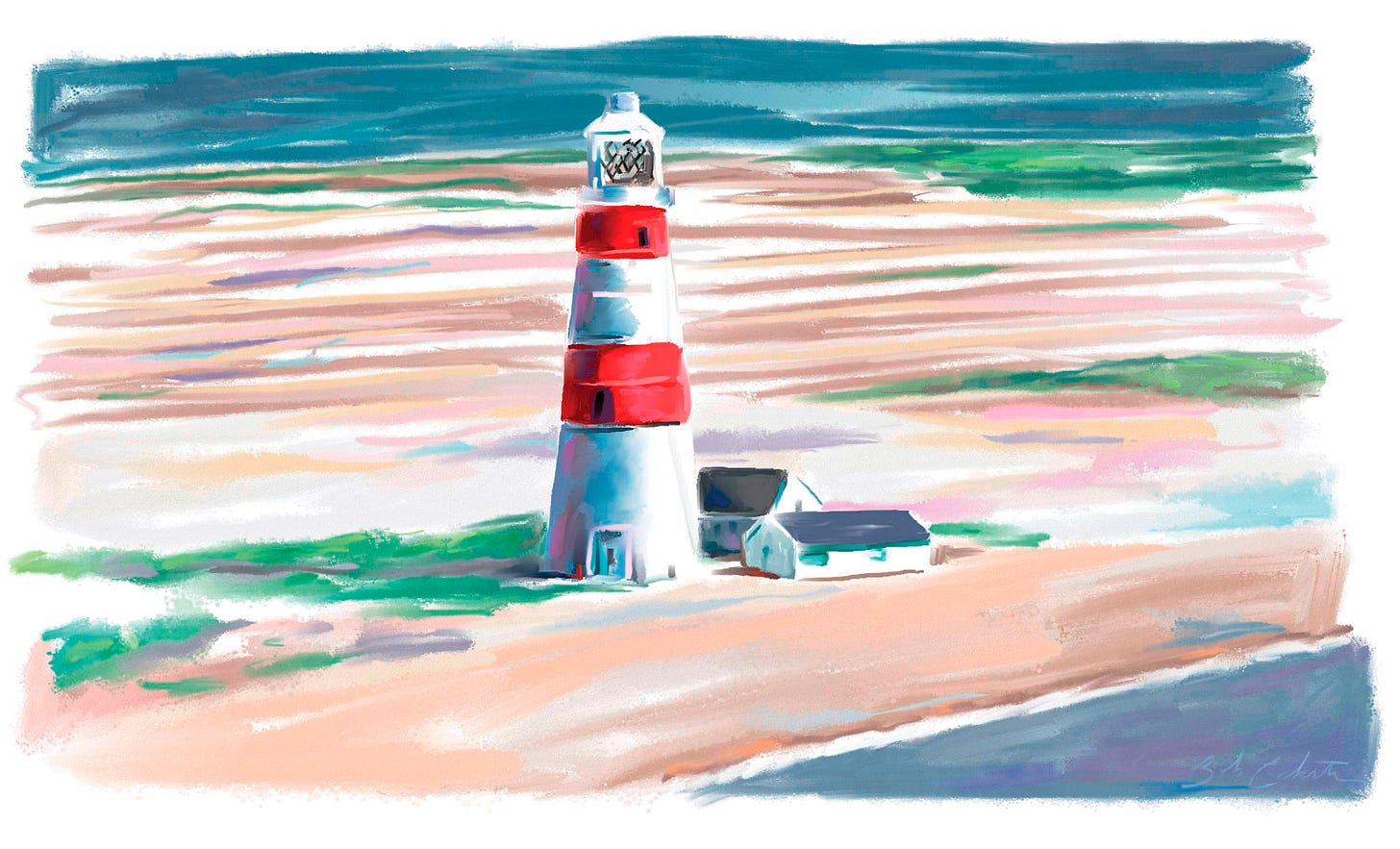


"Gooh, Yarg, and Gug walk into a bar..."
Love your caveman names, Bob. And this issue.
The strangest joke I wrote that David Letterman used on the Late Show was, "You know what I like most about New York City cab drivers? It's their crisp white bow ties."
It bombed, of course, and he loved it, and did call-backs to it throughout the show. His laughing at its oddity and failure made the audience laugh with him. No one else could have gotten away with it. The humor was in the character — his.
Great read Bob.
To your point on humor is at its funniest when it’s visual.
I agree.
If you're able to engage with the viewer's/reader's imagination, prompting them to visualize comedic situations, it often leads to a more memorable and impactful experience.